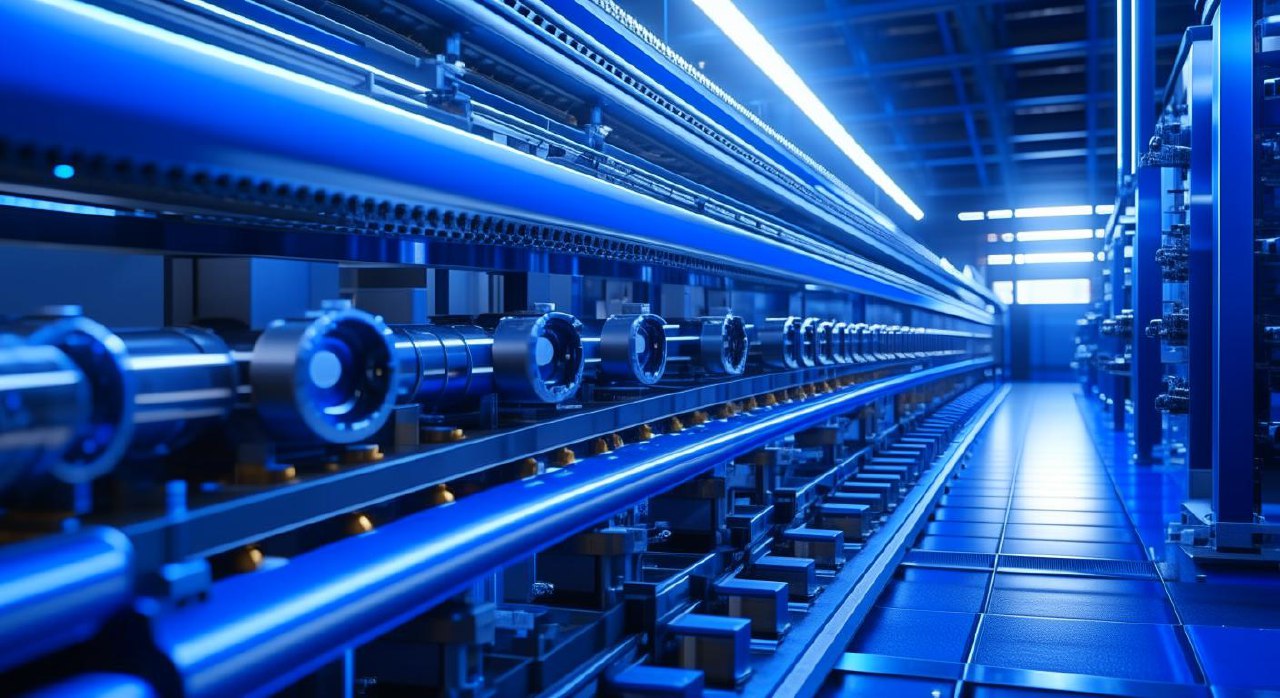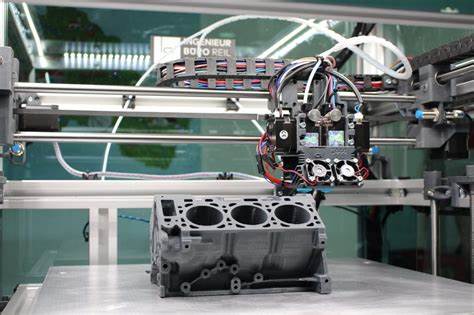Labor shortage and low productivity hinder manufacturers’ efforts to scale operations and address growing market demands. That is why factories are leveraging industrial automation to tackle these issues. For example, robotic production lines automate part assembly and product packaging to increase factory throughput. Read more to explore the impact of industrial automation on 10 industries.
1. Manufacturing
Industrial automation enables continuous mass production in manufacturing facilities. It reduces dependence on manual labor and, in turn, lowers assembly times and errors. That is why startups leverage AI, machine learning, and robotics to automate production lines.
2. Electronics
The electronics industry utilizes industrial automation to handle complex circuit packaging and fabrication processes. This improves accuracy in chip development while ensuring product consistency and homogeneity. Besides, electronics companies leverage AI and machine learning to automate circuit design, accelerating the time-to-market and design finalization.
3. Automotive
Labor shortage and assembly errors significantly affect automotive plant throughput. Factory automation uses AI, computer vision, advanced analytics, IoT, and robotics to tackle these issues. Startups aid industrial automation by developing solutions tailored for automotive processes and products.
For instance, some startups create AI-powered autonomous quality control systems that integrate with existing production lines. Such solutions enable vehicle manufacturers to improve production transparency, quality management, and industrial safety. They also allow businesses to leverage predictive maintenance to improve maintenance planning and reduce unexpected downtimes.
4. Energy
The energy industry primarily uses automation solutions to streamline backend operations and processes. Additionally, energy component manufacturers leverage industrial robots to automate production and maintenance tasks. Consequently, energy companies generate massive datasets on asset conditions, energy consumption rates, and grid loads.
Some startups combine them with AI and machine learning to forecast revenue and loads, thereby enabling data-driven decision-making. Further, they automate operations such as load balancing, contracting, invoicing, and energy sourcing, among others. For example, virtual power plants (VPPs) aggregate various energy sources to automate energy sourcing and enhance grid efficiency.
5. Logistics
Logistics automation startups use AI, robotics, automated guided vehicles (AGVs), and autonomous mobile robots (AMRs) to improve operations. They find use in warehouses and fulfillment centers. Warehousing companies leverage such solutions to automate and speed up materials handling tasks.
Since it removes manual labor, warehouses are able to reduce manual errors and improve throughput. Additionally, logistics automation improves space utilization and transparency in warehouses.
6. Packaging
AI-powered robotic systems automate packaging lines from material handling to palletizing. This enables companies to eliminate potential bottlenecks and downtimes. Besides, automated packaging improves quality control and consistency in the final packaged products.
To aid this, startups create plug-and-play automated packaging systems. Such solutions mitigate in-house system development and reduce capital expenses. Moreover, robot-assisted packaging lines lower the risk of employee injuries due to repetitive tasks, enhancing worker safety.
7. FoodTech
The increasing demand for food forces the food industry to scale production while ensuring climate-positive operations. To achieve this, startups offer automated food and beverage production lines. They utilize sensors, AI, and computer vision to improve productivity.
Through such solutions, food manufacturers are able to identify efficiency gaps and cost reduction opportunities. For example, some startups develop smart containers that automatically monitor wine parameters to ensure optimal temperature for wine storage. These solutions also improve food quality and transparency.8
8. Aerospace
Aerospace companies often deal with heavy parts and components that only require low-production runs. Therefore, their associated costs are very high. Industrial automation in the aerospace sector tackles this through flexible manufacturing systems. For instance, automated 3D printing lines enable low and high-volume runs of various aerospace parts.
Besides, they are low-cost compared to traditionally manufactured parts and support complex designs. That is why startups are developing process and machinery automation solutions tailored for the aerospace sector. They reduce manual errors and wastage as well as minimize human interventions required in assembly lines.
9. Oil & Gas
Oil and gas automation augments human labor and improves their safety. It automates processes, such as drilling and pipe handling, to reduce cycle times and scale operations. For instance, upstream producers utilize drones and submersibles to automate industrial inspection. O&G automation further optimizes production and plant availability by providing real-time operational visibility.
It also enables continuous equipment monitoring and predictive maintenance, thus improving maintenance scheduling and avoiding unexpected downtimes. In addition, automation allows O&G companies to reduce energy consumption and leakages to improve operational sustainability.
10. Construction
The construction industry leverages automation to tackle labor shortages and materials wastage. Startups develop robotic solutions for construction processes like bricklaying and rebar fabrication. They allow construction companies to reduce lead times and increase productivity.
Construction automation also advances building component prefabrication by enhancing quality and consistency. At the same time, 3D concrete printing optimizes construction projects on-site while improving worker safety.
Discover more at: https://www.startus-insights.com/innovators-guide/industrial-automation-startups/










